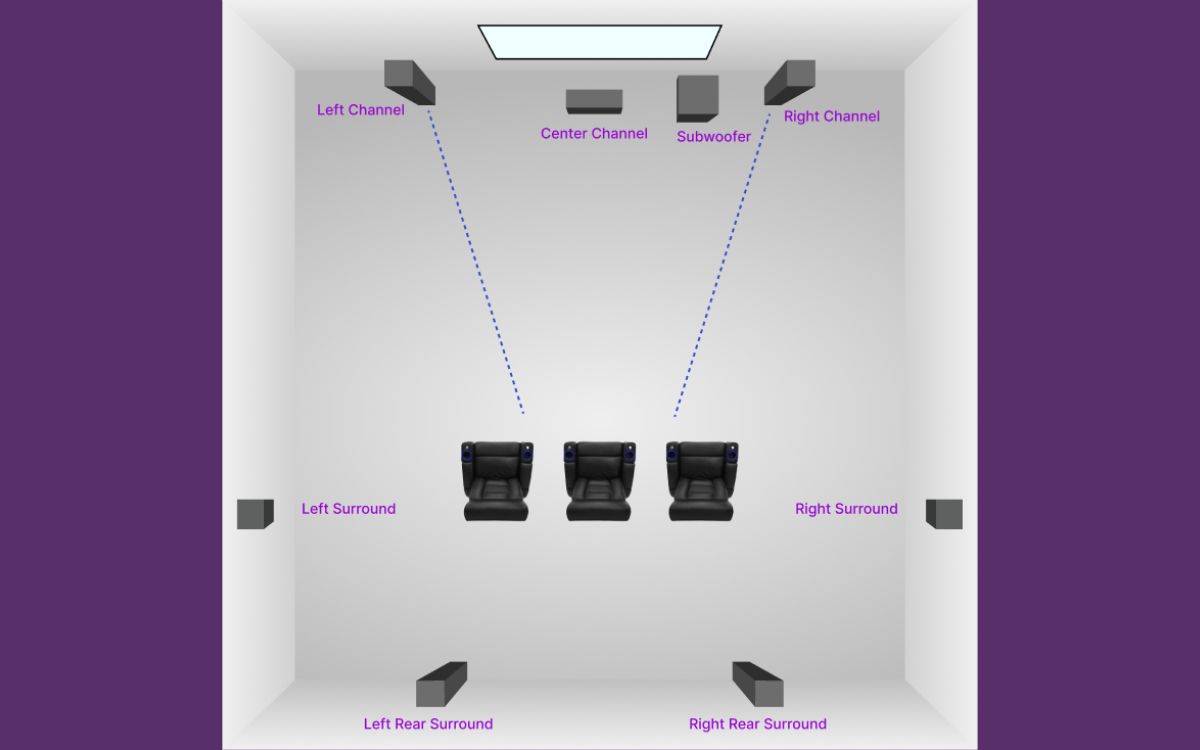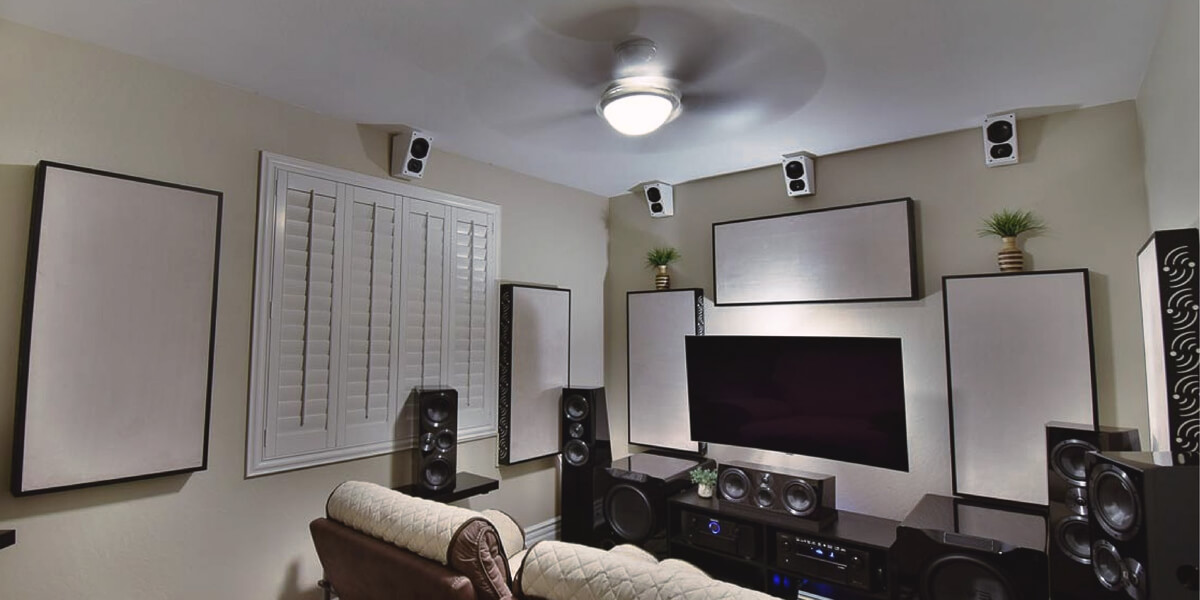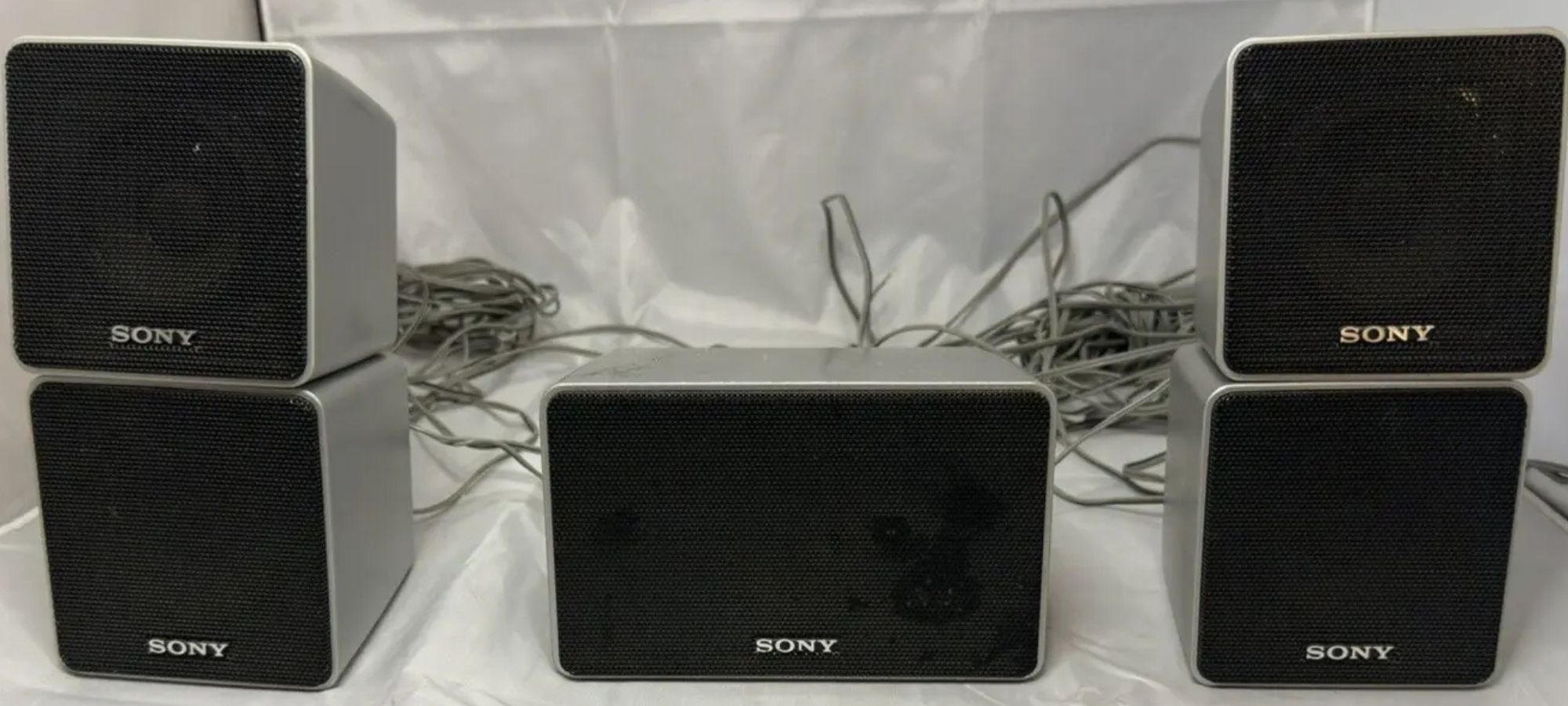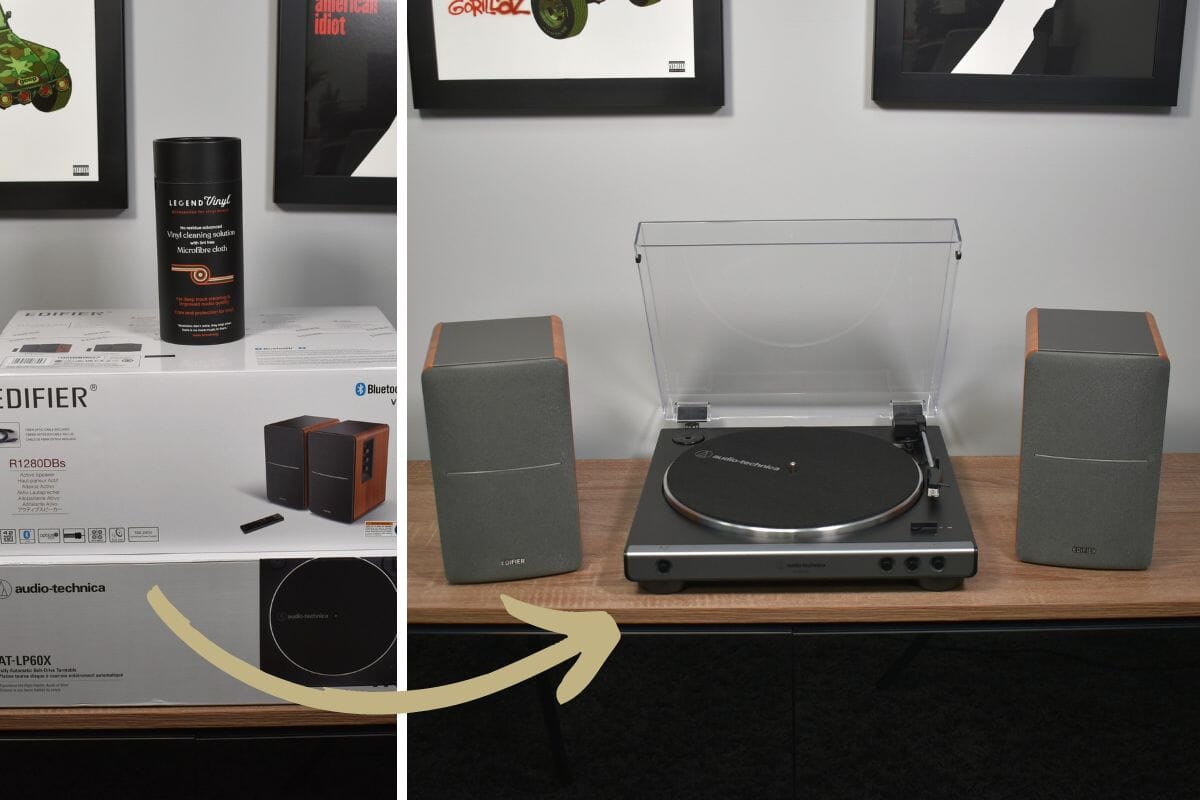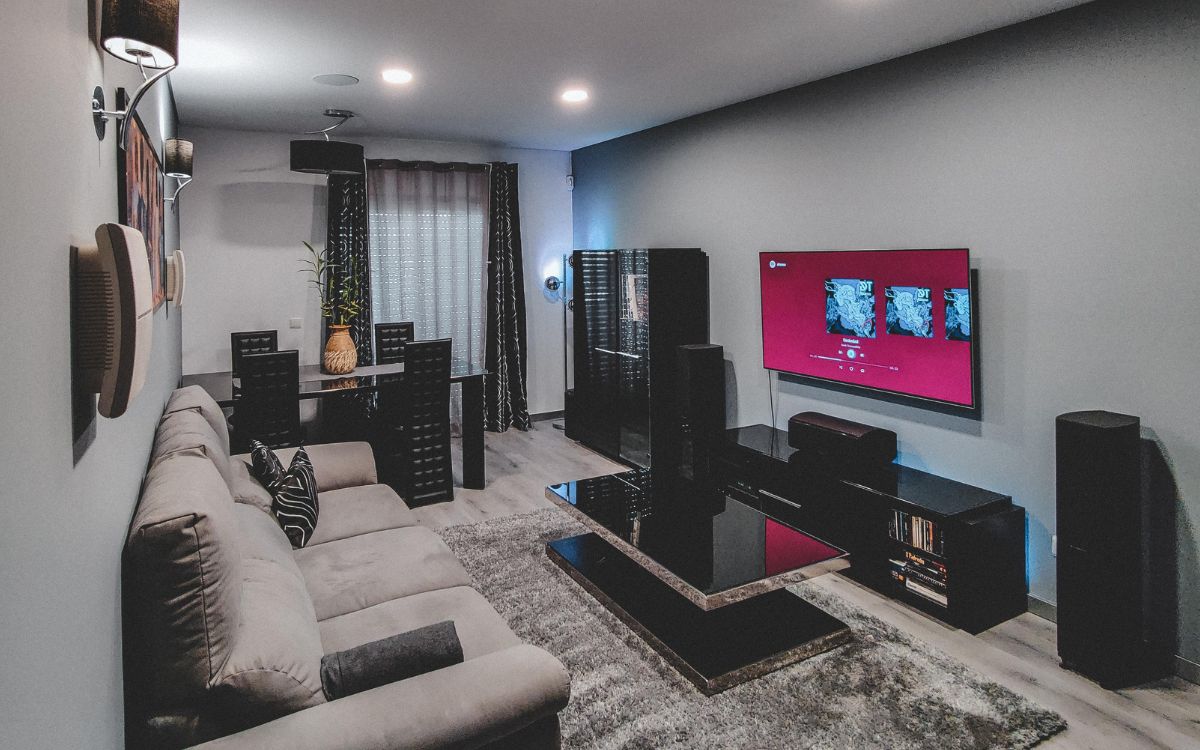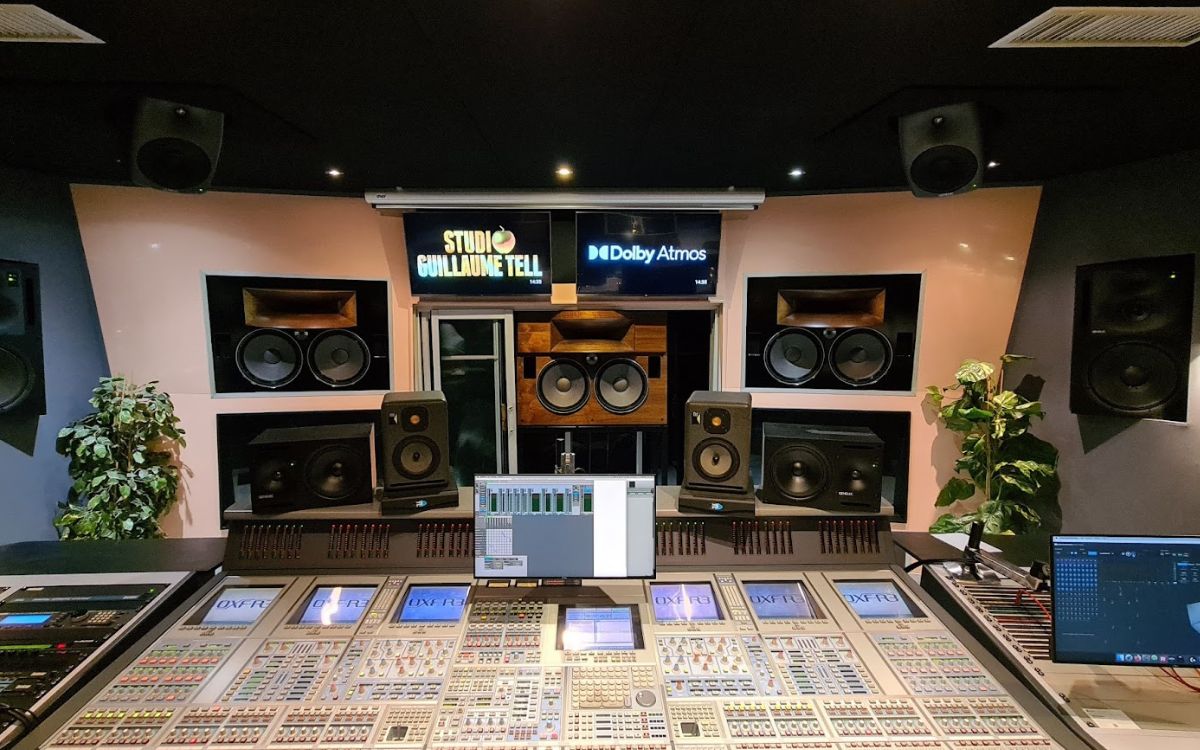Home>Production & Technology>Surround Sound>What Speaker Wire To Use For Surround Sound
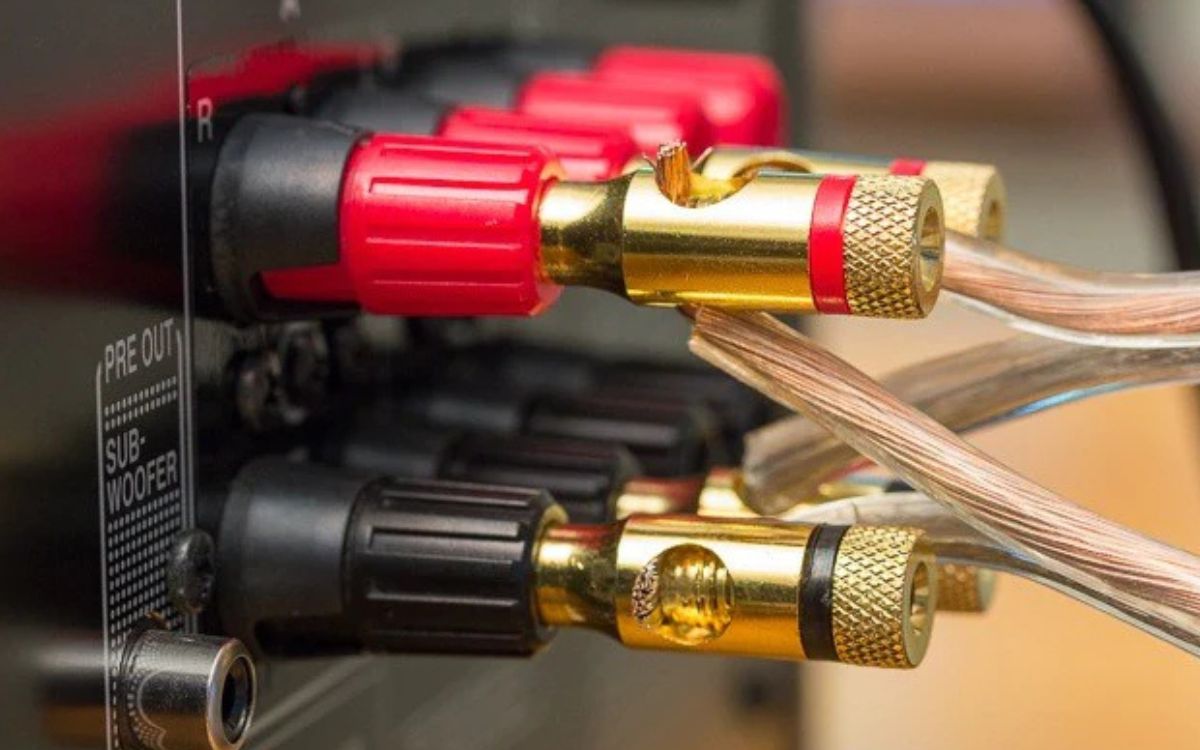

Surround Sound
What Speaker Wire To Use For Surround Sound
Modified: January 22, 2024
Choosing the right speaker wire for your surround sound system is crucial for optimal audio quality. Discover the best options and enhance your surround sound experience.
(Many of the links in this article redirect to a specific reviewed product. Your purchase of these products through affiliate links helps to generate commission for AudioLover.com, at no extra cost. Learn more)
Table of Contents
- Introduction
- Speaker Wire Basics
- Importance of Speaker Wire in Surround Sound Systems
- Factors to Consider When Choosing Speaker Wire for Surround Sound
- Gauge of Speaker Wire for Surround Sound
- Length of Speaker Wire for Surround Sound
- Types of Speaker Wire for Surround Sound
- Tips for Using Speaker Wire in Surround Sound Systems
- Conclusion
Introduction
Surround sound systems have revolutionized the way we experience audio in our homes. Whether you’re watching a movie or listening to music, having a high-quality surround sound setup can bring your entertainment to life. While speakers and receivers play a crucial role in delivering exceptional sound, one often overlooked component is the speaker wire.
Speaker wire, though seemingly simple, plays a vital role in transmitting audio signals from your receiver to your speakers. It serves as the conduit that carries the electrical current, ensuring that your speakers reproduce sound accurately and efficiently. Choosing the right speaker wire for your surround sound system can significantly impact the sound quality and overall performance.
In this article, we will delve into the world of speaker wire and explore its importance in a surround sound system. We will discuss the factors to consider when choosing speaker wire, such as gauge, length, and type, and provide tips for optimizing its use in your setup. So, if you’re ready to elevate your surround sound experience to new heights, let’s dive in!
Speaker Wire Basics
Before we dive into the specifics of choosing speaker wire for surround sound, let’s start with the basics. Speaker wire, also known as audio cable, is the electrical conductor that connects your amplifier or receiver to your speakers. Its primary function is to transmit electrical signals with minimal resistance, ensuring that the audio signal reaches the speakers without loss or distortion.
Most speaker wire consists of two conductors, typically color-coded for easy identification. The two conductors are responsible for carrying the positive (+) and negative (-) electrical signals from the amplifier to the corresponding terminals on the speakers.
When selecting speaker wire, one of the essential characteristics to consider is the wire’s gauge. The gauge refers to the thickness or diameter of the wire. The thicker the wire, the lower the gauge number, and the lower the resistance. Lower resistance leads to better power transfer and less loss of sound quality. Common gauge sizes for speaker wire range from 12 to 16, with 12 gauge being thicker and 16 gauge being thinner.
Speaker wire is typically made of copper, as it offers excellent conductivity and is relatively affordable. However, you may come across speaker wire with different coatings or materials, such as oxygen-free copper (OFC) or silver-plated copper (SPC). These variations can offer improved conductivity or corrosion resistance, but they also come at a higher cost.
It’s important to note that speaker wire is not the same as HDMI or other digital audio cables. Speaker wire is purely analog and used specifically for connecting speakers to the amplifier or receiver, while digital audio cables are employed for transmitting audio signals in a digital format.
Importance of Speaker Wire in Surround Sound Systems
When it comes to creating an immersive audio experience with your surround sound system, the quality of your speaker wire plays a crucial role. The speaker wire acts as the conduit for the audio signal, and its performance can impact the fidelity and clarity of the sound produced by your speakers.
One of the primary reasons speaker wire is important in surround sound systems is its impact on signal transmission. High-quality speaker wire with adequate gauge ensures that electrical signals are transferred effectively from the amplifier to the speakers. This is especially important for large, powerful speakers that require higher power delivery to reproduce low-frequency sounds. Using poor quality or insufficient gauge wire can lead to signal loss, distortions, and reduced sound quality.
In addition to proper signal transmission, speaker wire also affects the overall impedance of the system. Impedance is the resistance to the flow of electrical current in a circuit. It is important to match the impedance of your speakers with the amplifier to prevent significant power loss and distortion. Using the correct gauge speaker wire can help achieve the desired impedance and optimize the performance of your system.
Another aspect influenced by the quality of speaker wire is the prevention of signal interference and noise. Speaker wire should be properly insulated and shielded to minimize the interference caused by external factors. Without proper insulation, the wire may pick up electromagnetic interference from other electronics or nearby power cables, resulting in audible noise or hum in the audio signal.
Furthermore, using high-quality speaker wire can also contribute to the longevity and reliability of your surround sound system. Cheap or subpar wire may deteriorate over time, leading to signal degradation or even wire breakage. Investing in quality speaker wire ensures a more durable and long-lasting connection between your amplifier and speakers.
Overall, the importance of speaker wire in surround sound systems cannot be underestimated. It significantly impacts signal transmission, impedance matching, noise reduction, and overall system performance. Choosing the right speaker wire suited to your specific setup and requirements is essential in achieving optimal audio reproduction and an immersive surround sound experience.
Factors to Consider When Choosing Speaker Wire for Surround Sound
When selecting speaker wire for your surround sound system, there are several important factors to consider. These factors can impact the overall audio quality, performance, and compatibility with your setup. Let’s explore what you should keep in mind when choosing speaker wire.
1. Gauge: The gauge of the speaker wire determines its thickness and resistance. Thicker wire (lower gauge) has less resistance and is suitable for longer cable runs or high-power speakers. Thinner wire (higher gauge) works well for shorter distances or lower power applications. Choose a gauge that is appropriate for your specific needs.
2. Length: Consider the distance between your amplifier or receiver and the speakers when determining the length of the speaker wire. Longer wire lengths can result in increased resistance and signal loss, particularly with thinner gauge wire. It’s best to measure the required length accurately to minimize any potential issues.
3. Type of Wire: There are various types of speaker wire available, including copper, oxygen-free copper (OFC), and silver-plated copper (SPC). Copper wire is the standard choice for most applications, offering good conductivity at an affordable price. OFC and SPC wire can provide improved conductivity or corrosion resistance, but they are also more expensive.
4. Insulation: Look for speaker wire with insulation that is durable and provides proper protection. Insulation helps prevent signal interference and keeps the wire safe from external factors. Additionally, it is essential to ensure that the wire is labeled as CL2 or CL3 if it will be installed within walls or ceilings to comply with fire safety standards.
5. Connector Compatibility: Consider the connectors on your speakers and amplifier or receiver when selecting speaker wire. Ensure that the wire is compatible with the terminal connectors, whether they require banana plugs, spade connectors, or bare wire connections. Matching the correct connector type will ensure a secure and reliable connection.
6. Budget: Set a budget for your speaker wire and consider your overall audio system investment. While it’s important to choose quality wire, it’s also essential to strike a balance with your budget. Avoid overspending on wire if it exceeds your requirements or the capabilities of your setup.
By considering these factors, you can make an informed decision when choosing speaker wire for your surround sound system. It’s essential to find the right balance between gauge, length, type, insulation, and compatibility to ensure optimal audio performance and compatibility with your specific setup.
Gauge of Speaker Wire for Surround Sound
The gauge of speaker wire is a crucial consideration when setting up your surround sound system. It refers to the thickness or diameter of the wire, which directly impacts its electrical resistance and conductivity. Choosing the correct gauge wire is essential to ensure optimal performance and prevent signal loss in your setup.
Speaker wire gauges typically range from 12 to 16, with lower gauge numbers indicating thicker wire. As a general rule, the thicker the wire, the lower the resistance, leading to better power transfer and reduced loss of sound quality.
For shorter wire lengths or systems with lower power requirements, such as bookshelf speakers or smaller setups, a 16-gauge wire may be sufficient. It is more flexible and easier to work with, making it ideal for installations that don’t demand high power transmission.
However, if you have a large room, powerful speakers, or are running longer wire lengths, a thicker gauge wire, such as 12 or 14, is recommended. These larger gauge wires offer lower resistance and are better equipped to handle higher power distribution, resulting in improved audio performance and minimized signal loss over longer distances.
Choosing the right gauge largely depends on the power demands of your speakers and the distance between your amplifier or receiver and the speakers. As a guideline, consider the following recommendations:
- 12-gauge wire: Ideal for longer wire lengths (over 50 feet) or high-power applications, such as floor-standing speakers or subwoofers.
- 14-gauge wire: Suitable for average-sized rooms and moderate power requirements.
- 16-gauge wire: Works well for shorter wire lengths (under 50 feet) or setups with lower power demands, such as bookshelf or surround speakers.
Remember that using a higher gauge wire than necessary may not harm your system, but it could limit power transfer and potentially affect audio quality. On the other hand, using a lower gauge wire than recommended for the power demands and length of your system may result in signal degradation and potential overheating.
Ultimately, it’s important to assess your specific setup requirements, including speaker power ratings and wire lengths, to determine the appropriate gauge for your surround sound system. Consulting with an audio specialist or following manufacturer recommendations can also help ensure the best choice for your specific setup.
Length of Speaker Wire for Surround Sound
The length of speaker wire used in your surround sound system is an important consideration that can impact audio performance and overall signal quality. While it may be tempting to use the longest wire available to accommodate your setup, it’s crucial to understand the potential implications of wire length and choose accordingly.
As a general rule, shorter wire lengths are preferred as they minimize the resistance and potential signal loss in the system. Longer wire lengths, on the other hand, can increase the resistance and result in a weaker audio signal reaching your speakers. However, this doesn’t mean that longer wire runs are not feasible; they simply require careful consideration.
Before determining the length of speaker wire required for your surround sound system, consider the following factors:
- Room Size: Assess the size of the room and the distance between your amplifier or receiver and the speakers. Measure the linear distance along walls or ceilings, including any necessary detours to conceal the wire. This will give you an idea of the approximate length of wire needed.
- Speaker Placement: Determine the optimal placement of your speakers based on the room layout and acoustic considerations. This will help you map out the wire paths and determine the wire length required for each speaker.
- Wire Gauge: Consider the recommended gauge for your specific setup. Thicker gauge wires (lower numbers) generally handle longer distances better, while thinner gauge wires (higher numbers) are suitable for shorter runs.
- Power Requirements: Take into account the power requirements of your speakers. Higher power demands may benefit from shorter wire lengths and thicker gauge wire to minimize resistance and maintain signal integrity.
Once you have taken these factors into account, measure and calculate the required length of wire for each speaker individually. It’s always best to err on the side of caution and add a few extra feet to accommodate any unforeseen obstacles or future adjustments.
Remember, excessive wire lengths can lead to increased resistance and potential signal degradation. It’s recommended to keep the wire lengths as short as reasonably possible for optimal performance.
In some cases, wire length can be a limiting factor. If you have an exceptionally large room or need to run wire over significant distances, consider using an amplifier with a built-in voltage or impedance compensation feature. These features help counteract the potential signal loss and maintain audio quality over longer wire runs.
By carefully considering the length of speaker wire you need for your surround sound system and taking into account the factors mentioned above, you can optimize the signal transmission and ensure a high-quality audio experience throughout your space.
Types of Speaker Wire for Surround Sound
When it comes to choosing speaker wire for your surround sound system, you’ll encounter various types to suit different preferences and requirements. Understanding the different options will help you make an informed decision and select the most suitable speaker wire for your setup. Let’s explore some common types of speaker wire:
- Copper Wire: Copper wire is the most common and widely used type of speaker wire. It offers excellent conductivity, making it an ideal choice for transmitting audio signals. Copper wire is affordable, readily available, and can provide reliable performance in most surround sound systems.
- Oxygen-Free Copper (OFC) Wire: Oxygen-Free Copper, or OFC wire, is a premium variant of copper wire. It is manufactured with a higher purity level, with oxygen removed to minimize oxidation and improve conductivity. OFC wire offers superior signal transmission and can result in improved sound quality, particularly in high-end audio systems where every detail matters.
- Silver-Plated Copper (SPC) Wire: Silver-plated copper wire combines the conductivity benefits of copper with the added properties of silver. Silver is an even better conductor than copper, offering lower resistance and optimized signal transmission. SPC wire can deliver enhanced sound quality, clarity, and precision, making it popular among audiophiles and those seeking the highest level of audio performance.
- Flat Ribbon Wire: Flat ribbon wire is a unique variant of speaker wire that offers a sleek and low-profile design. Instead of the traditional round wire construction, flat ribbon wire features a flat and flexible shape. It is often used in applications where hiding or routing the wire discreetly is a priority, such as wall-mounted speakers or tight spaces.
- Bi-Wire and Bi-Amp Speaker Wire: Bi-wire and bi-amp speaker wire setups use separate wires to connect to the speaker’s woofer and tweeter terminals, allowing for dedicated power delivery to each driver. This configuration can potentially provide improved audio performance and better control over the sound. However, bi-wire and bi-amp setups require compatible speakers and amplifiers with the corresponding terminals.
It’s important to note that while there are various types of speaker wire available, the differences in sound quality among them may not always be easily distinguishable in typical home theater or surround sound setups. Factors such as gauge, length, and proper installation tend to have a more significant impact on overall audio performance.
When selecting speaker wire, consider your budget, setup requirements, and the level of audio performance you desire. Copper wire is a practical and cost-effective choice for most applications. If you seek improved conductivity and are willing to invest in higher-quality wire, OFC or SPC wire may be worth considering.
Ultimately, the choice of speaker wire type should align with your specific needs, system components, and personal preference. Consulting with audio experts or conducting A/B listening tests could also help in determining if a specific type of wire provides tangible benefits in your surround sound setup.
Tips for Using Speaker Wire in Surround Sound Systems
Using speaker wire effectively in your surround sound system involves more than just connecting the wires. Here are some tips to ensure optimal performance and maximize your audio experience:
- Quality Matters: Invest in high-quality speaker wire from reputable brands. Quality wire ensures better signal transmission and reduces the risk of signal loss or interference. It also tends to be more durable, providing a longer lifespan for your audio setup.
- Proper Gauge Selection: Choose the appropriate wire gauge based on the length of the wire and the power requirements of your speakers. Thicker gauge wire is suitable for longer runs and high-power speakers, while thinner gauge wire works well for shorter distances and lower-power setups.
- Ensure Proper Length: Measure the required length of wire accurately to avoid unnecessary excess or tightness. Excess wire can lead to clutter and potential signal degradation, while tight wire runs can strain the connections and cause damage. Aim for clean and tidy wire routing.
- Connectors and Terminations: Use connectors that are compatible with your speakers and amplifier or receiver. Banana plugs, spade connectors, and bare wire connections are common options. Ensure that the connectors are securely attached to the wire and provide a solid connection for optimal signal transfer.
- Minimize Wire Interference: Keep the speaker wire away from power cables, sources of electromagnetic interference, and other electronics. Crossings or proximity to these sources can introduce interference and negatively impact the audio signal quality. Run the wire along different paths or use cable management solutions to separate speaker wire from other cables.
- Secure and Insulate: Make sure that the speaker wire connections are secure and properly insulated. Loose or inadequate connections can result in signal loss or intermittent audio. Additionally, ensure that the wire insulation is intact and provides protection against potential damage or short circuits.
- Avoid Pinching or Sharp Bends: Avoid tightly bending or pinching the wire during installation. Sharp bends can create kinks or damage the wire, affecting the signal transmission and potentially leading to wire breakage over time. Maintain gradual and smooth bends to preserve the wire’s integrity.
- Labeling and Organization: Label the speaker wire ends or use color-coded markers to identify the corresponding speaker terminals and amplifier connections. Proper organization eliminates confusion and facilitates troubleshooting or future changes to your audio setup.
By following these tips, you can optimize the use of speaker wire in your surround sound system. Taking care during installation and ensuring proper wire selection, connections, and organization will result in improved audio performance and a more enjoyable surround sound experience.
Conclusion
Choosing the right speaker wire is a critical step in creating a high-quality surround sound system. It plays a vital role in transmitting audio signals from your amplifier or receiver to your speakers, directly impacting sound quality and overall performance. By considering factors such as gauge, length, and wire type, you can ensure optimal signal transmission, reduce signal loss, and maintain audio fidelity.
When selecting speaker wire, remember that the gauge should match the power requirements and length of your setup. Thicker gauge wire is suitable for longer distances and high-power speakers, while thinner gauge wire works well for shorter runs and lower-power setups. Additionally, considering the types of speaker wire available, such as copper, oxygen-free copper, and silver-plated copper, can further enhance audio performance based on your preferences and budget.
Proper installation and organization are crucial for maximizing the benefits of speaker wire. Take care to secure connections, insulate wire properly, and avoid interference from other cables or electronics. By following these best practices, you can ensure a clean and reliable audio signal, resulting in an immersive and enjoyable surround sound experience.
Remember, the quality of your speaker wire should complement the other components in your surround sound system, such as speakers, amplifiers, and receivers. Balance your budget with your audio goals to find the right wire that suits your specific needs. Consulting with audio experts or seeking professional advice can also provide valuable insights.
In conclusion, don’t overlook the importance of speaker wire when setting up your surround sound system. The right choice of wire, along with proper installation and organization, contributes to an exceptional audio experience, allowing you to immerse yourself in the world of movies, music, and more with the utmost clarity and fidelity.




